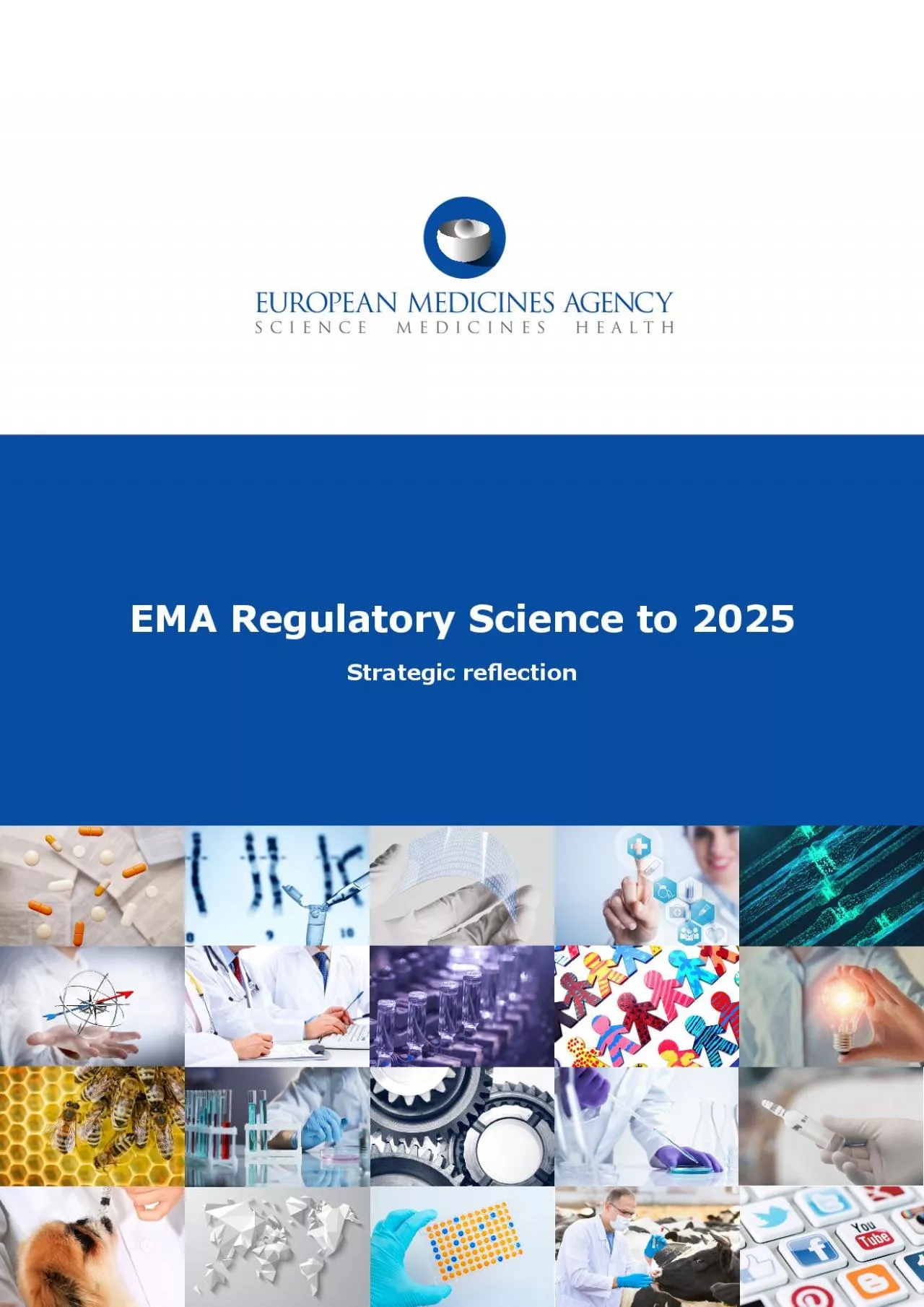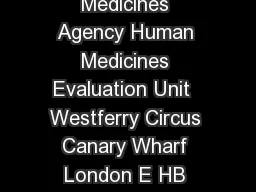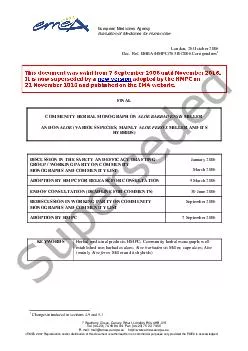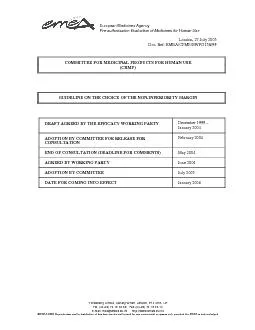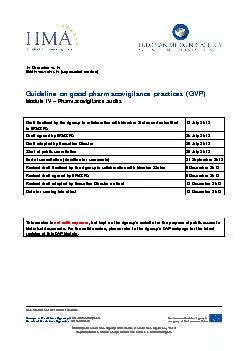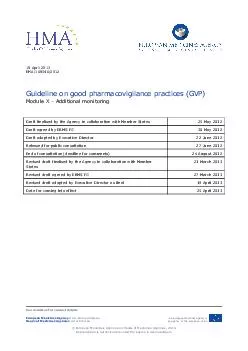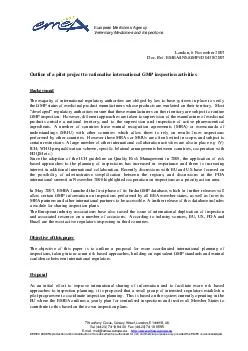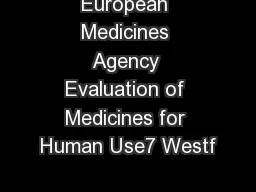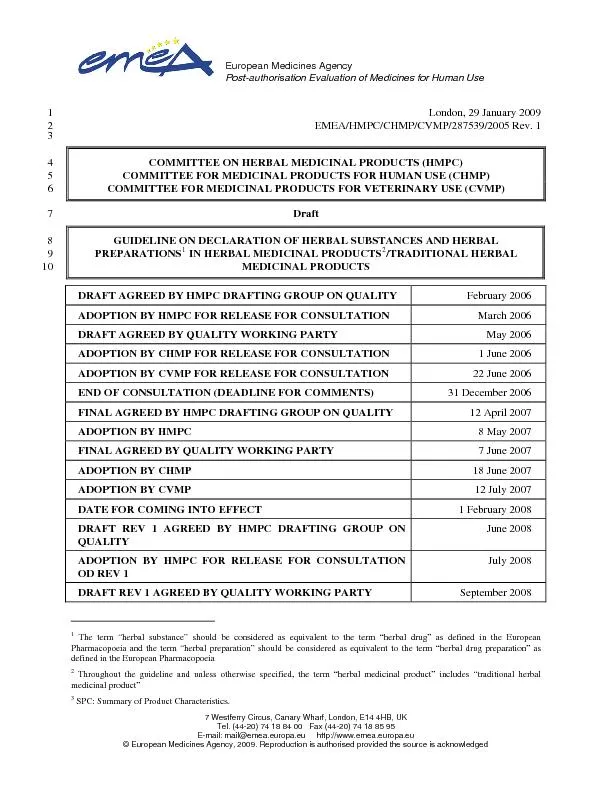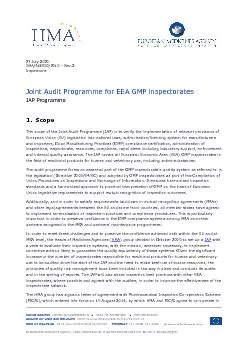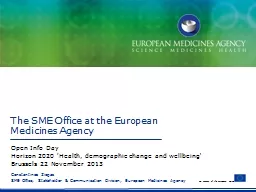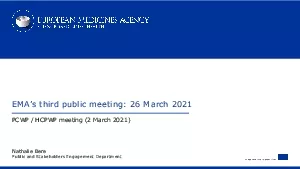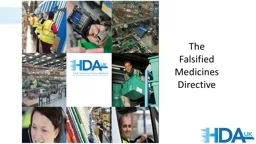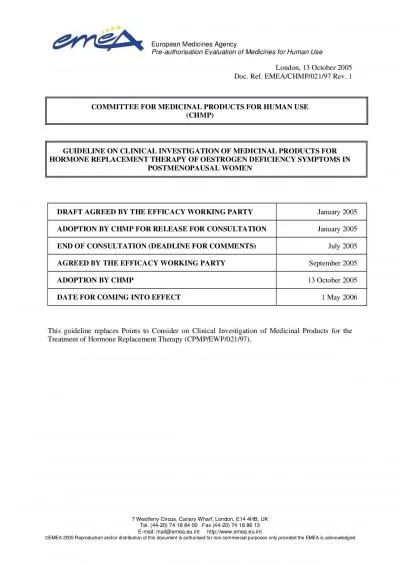PDF-EUROPEAN MEDICINES AGENCY
Author : roberts | Published Date : 2021-09-28
ealtEMA Regulatory Science to 2025Strategic rex0066006CectionContentsForeword by Prof Guido Rasi EMA Executive Director1Vision 151 Human medicines2Vision 151 Veterinary
Presentation Embed Code
Download Presentation
Download Presentation The PPT/PDF document "EUROPEAN MEDICINES AGENCY" is the property of its rightful owner. Permission is granted to download and print the materials on this website for personal, non-commercial use only, and to display it on your personal computer provided you do not modify the materials and that you retain all copyright notices contained in the materials. By downloading content from our website, you accept the terms of this agreement.
EUROPEAN MEDICINES AGENCY: Transcript
Download Rules Of Document
"EUROPEAN MEDICINES AGENCY"The content belongs to its owner. You may download and print it for personal use, without modification, and keep all copyright notices. By downloading, you agree to these terms.
Related Documents

